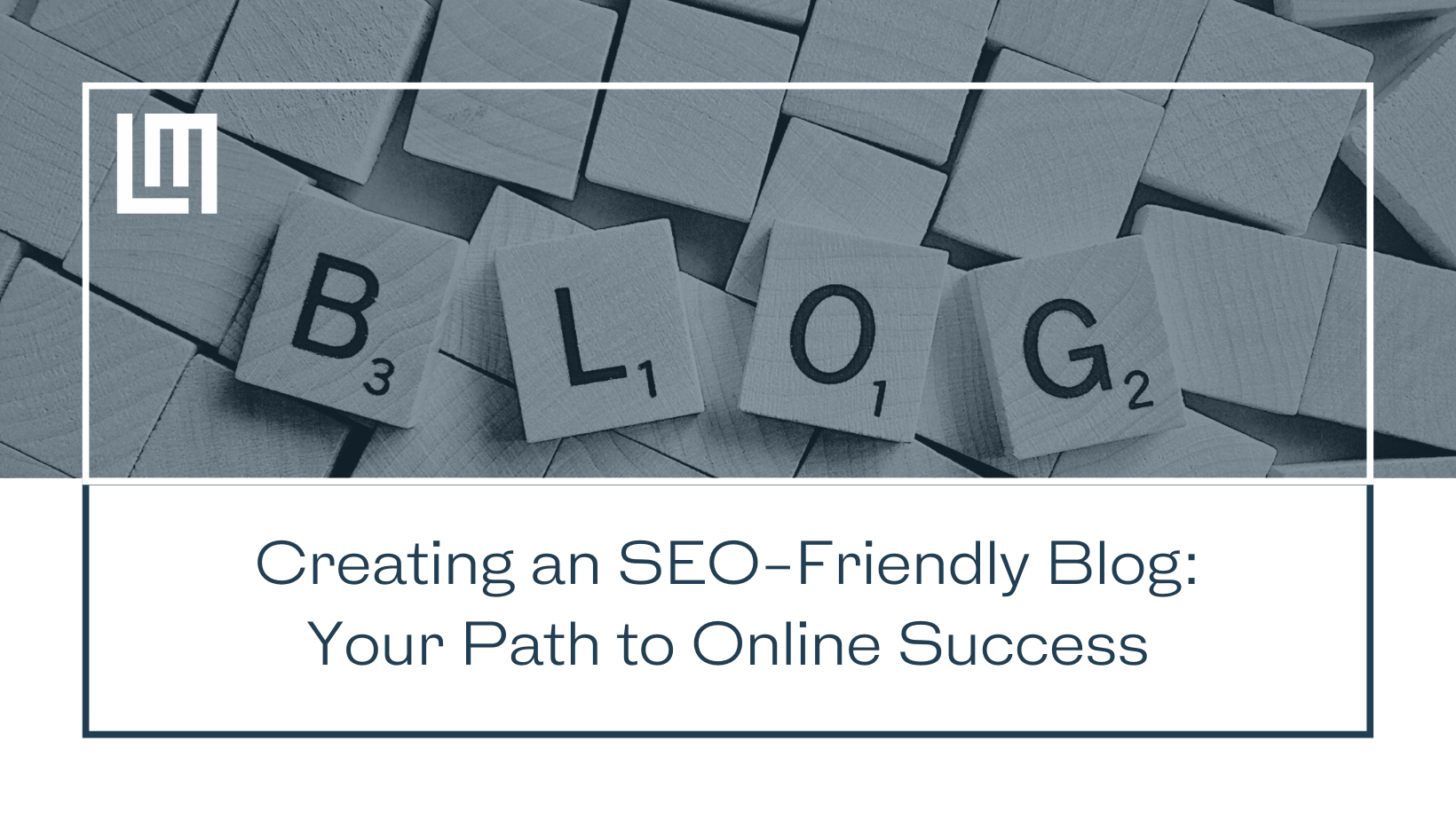Creating an SEO-Friendly Blog: Your Path to Online Success
Having a blog is an essential aspect of establishing your online presence and connecting with your target audience. However, just having a blog is not enough. To truly succeed in the vast sea of online content, you need to ensure your blog is search engine optimized (SEO-friendly). By making your blog SEO-friendly, you'll increase its visibility on search engines, attract more organic traffic, and ultimately achieve your online goals. In this blog, we'll explore the key steps to create an SEO-friendly blog that sets you on the path to success.
Research and Choose the Right Keywords
Keywords are the foundation of SEO. Start by conducting thorough keyword research to identify the words and phrases your target audience uses to search for content related to your blog's niche. Use keyword research tools like Google Keyword Planner, Ubersuggest, or Ahrefs to discover relevant and high-traffic keywords.
Focus on long-tail keywords – more specific phrases that have lower competition. These keywords are often easier to rank for and attract more targeted visitors to your blog. Sprinkle these keywords naturally throughout your blog posts, titles, meta descriptions, and subheadings.
High-Quality Content is King
While optimizing your blog for search engines is vital, remember that content is king. Creating high-quality, informative, and engaging content should be your top priority. Search engines like Google value content that provides value to users. Longer, in-depth articles tend to perform better in search rankings, so aim for comprehensive and well-researched posts.
Ensure your content is unique, well-structured, and easy to read. Use subheadings, bullet points, and visuals to break up large blocks of text. Remember to include relevant images and videos as they enhance user experience and make your content more shareable.
Optimize On-Page Elements
On-page optimization involves fine-tuning various elements on your blog to improve its search engine visibility. Key on-page elements to optimize include:
A. Title Tags: Craft compelling and keyword-rich title tags for each blog post. Keep them concise (around 60 characters) and attention-grabbing to encourage clicks from search results.
B. Meta Descriptions: Write enticing meta descriptions (around 150-160 characters) that include relevant keywords. Meta descriptions don't directly affect rankings, but they influence click-through rates.
C. URL Structure: Use descriptive, clean URLs that include relevant keywords. Avoid lengthy, complex URLs that can confuse search engines and users alike.
D. Heading Tags: Utilize H1, H2, and H3 tags to structure your content logically. Incorporate keywords in some of these headings to give search engines a clear understanding of your blog's main topics.
Mobile-Friendly Design
With the majority of online searches now happening on mobile devices, having a mobile-friendly blog is crucial. Choose a responsive design that adapts to different screen sizes and ensures smooth navigation on smartphones and tablets. Google considers mobile-friendliness as a ranking factor, so a mobile-optimized blog will positively impact your SEO efforts.
Page Loading Speed
Page loading speed directly affects user experience, and it's also a ranking factor for search engines. Optimize your blog's loading speed by compressing images, leveraging browser caching, and using a reliable hosting provider. Tools like Google PageSpeed Insights can help you identify and fix any speed-related issues.s.
Internal Linking
Internal linking refers to the practice of connecting different pages and blog posts within your website through hyperlinks. This helps search engines discover and index your content more efficiently. Additionally, internal links provide readers with a way to explore related topics on your blog, increasing their time on site and decreasing bounce rates.
External Linking
Linking to reputable external sources adds credibility to your blog and provides additional value to your readers. When appropriate, cite authoritative websites and articles to support your claims or provide further insights. This practice can also encourage other websites to link back to your content, which can improve your blog's SEO.
Social Media Promotion
Social media can play a significant role in driving traffic to your blog and improving its SEO indirectly. Share your blog posts across your social media channels to reach a wider audience and encourage social signals (likes, shares, comments) that can positively impact search engine rankings.
Conclusion
Creating an SEO-friendly blog requires a thoughtful approach that balances optimization techniques with providing valuable content to your audience. By focusing on relevant keywords, producing high-quality content, optimizing on-page elements, and ensuring a positive user experience, you'll be well on your way to improving your blog's search engine visibility and achieving online success. Remember that SEO is an ongoing process, so monitor your blog's performance, adapt to changes in search engine algorithms, and consistently deliver value to your readers. Happy blogging!
Tagged as: SEO-Friendly Blog
Share this post:


